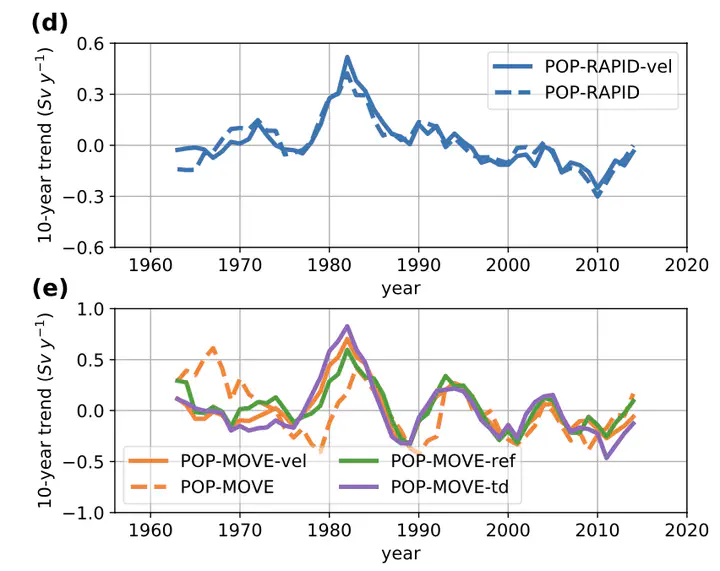 RAPID and (e) MOVE from the transport methods considered.
RAPID and (e) MOVE from the transport methods considered.Abstract
Reference level assumptions used to calculate the Atlantic meridional overturning circulation transports at the RAPID and Meridional Overturning Variability Experiment (MOVE) observing arrays are revisited in an eddying ocean model. Observational transport calculation methods are complemented by several alternative approaches. At RAPID, the model transports from the observational method and the model truth (based on the actual model velocities) agree well in their mean and variability. There are substantial differences among the transport estimates obtained with various methods at the MOVE site. These differences result from relatively large and time-varying reference velocities at depth in the model, not supporting a level-of-no-motion. The methods that account for these reference velocities properly at MOVE produce transports that are in good agreement with the model truth. In contrast with the observational estimates, the model transport trends at MOVE and RAPID largely agree with each other on pentadal to multi-decadal time scales.